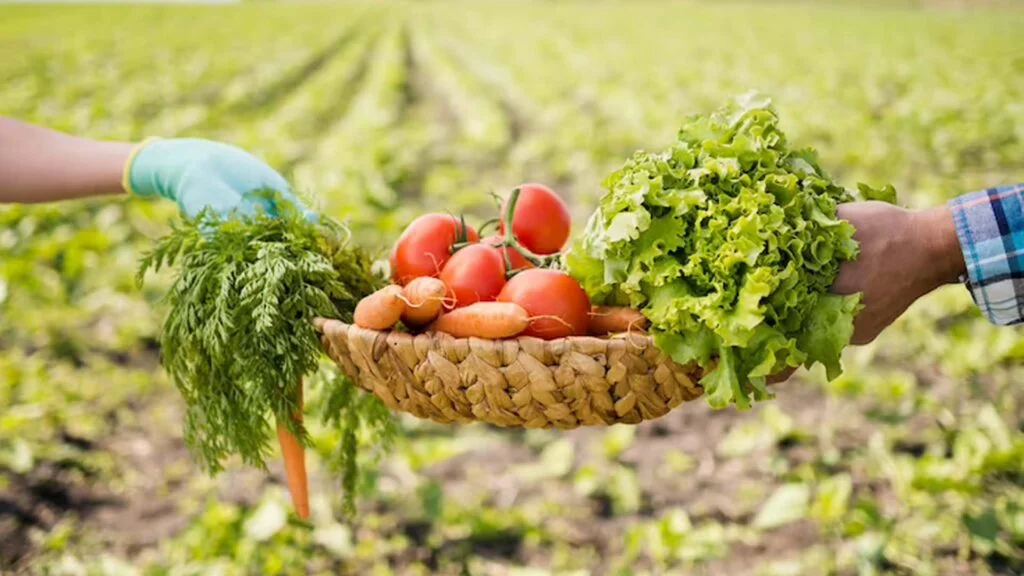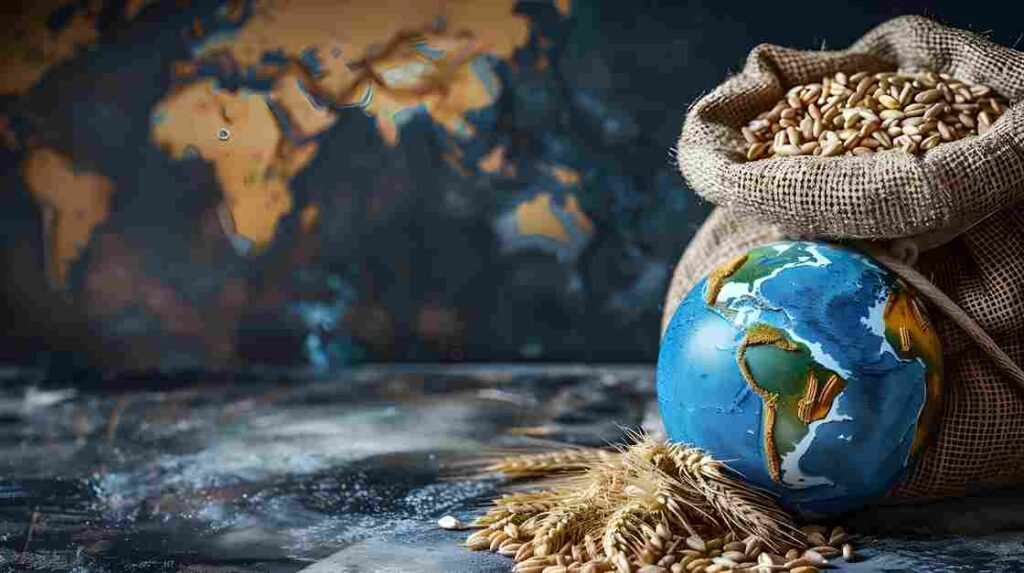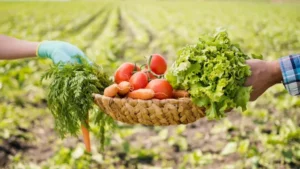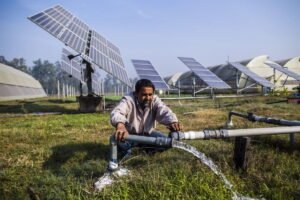Introduction
Sustainable Farming Practice is essential for ensuring the future of agriculture while minimizing negative environmental impacts. As the demand for food grows globally, farmers must adopt practices that protect natural resources, improve soil health, and reduce dependence on harmful chemicals. Sustainable farming practices focus on increasing productivity while maintaining the balance of ecosystems. In this article, we explore the best sustainable farming practices that can help farmers achieve long-term success, improve crop yields, and contribute positively to the environment.
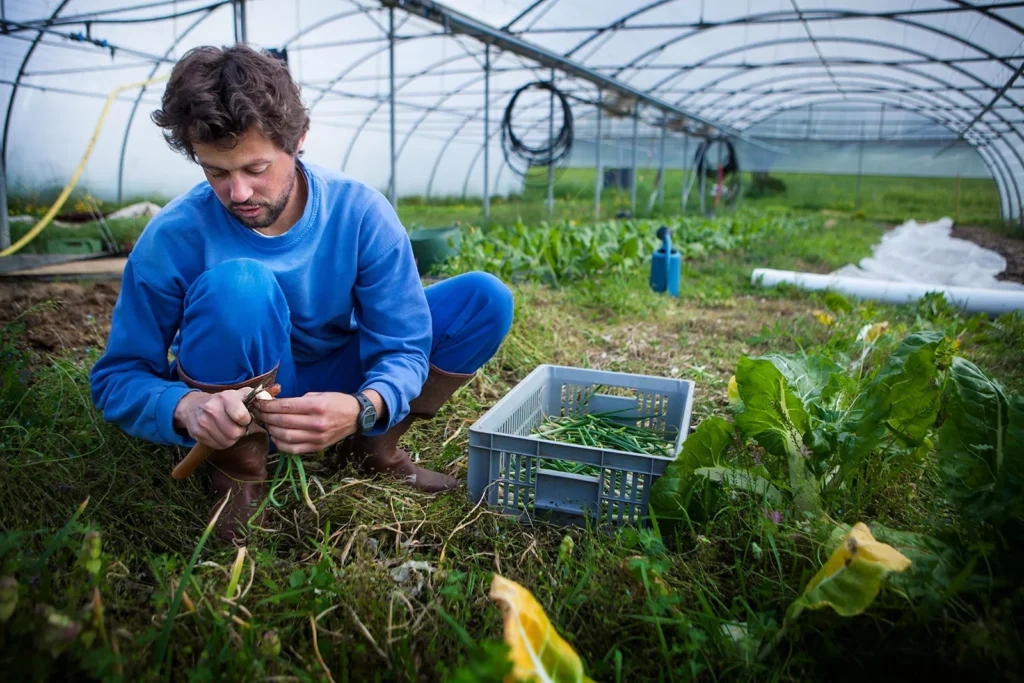
1. Crop Rotation
Crop rotation involves growing different types of crops in the same area across different seasons. This practice helps reduce soil depletion, prevent pests, and maintain healthy soil by allowing the soil to rest and regenerate.
- Benefits:
- Reduces pest and disease cycles by interrupting the habitat of pests.
- Improves soil fertility by alternating crops with different nutrient requirements.
- Enhances soil structure and reduces soil erosion.
- Reduces pest and disease cycles by interrupting the habitat of pests.
2. Organic Farming
Organic farming in Sustainable Farming Practice is a method that avoids the use of synthetic fertilizers, pesticides, and genetically modified organisms (GMOs). Instead, it relies on natural techniques like composting, crop rotations, and organic pest management.
- Benefits:
- Reduces environmental pollution by avoiding synthetic chemicals.
- Promotes healthier soils and ecosystems.
- Increases biodiversity by fostering a variety of plant and animal life.
- Reduces environmental pollution by avoiding synthetic chemicals.

3. Agroforestry
Agroforestry integrates trees and shrubs into crop and livestock farming systems. It creates a diverse ecosystem that benefits both the farm and the surrounding environment and Sustainable Farming Practice.
- Benefits:
- Enhances biodiversity and offers habitat for wildlife.
- Improves soil fertility and reduces erosion by stabilizing the soil.
- Helps with carbon sequestration by capturing atmospheric CO2.
- Provides additional sources of income from timber or fruit production.
- Enhances biodiversity and offers habitat for wildlife.
4. Conservation Tillage
Conservation tillage, or no-till farming, is a technique where the soil is disturbed as little as possible during planting and harvesting. This method protects the soil structure and conserves moisture.
- Benefits:
- Reduces soil erosion and water runoff.
- Increases water retention in the soil, leading to better drought resistance.
- Improves soil organic matter, which enhances soil fertility.
- Reduces soil erosion and water runoff.

5. Cover Cropping
Cover crops are planted during the off-season to protect the soil from erosion, improve soil health, and increase organic matter content. These crops are not harvested for profit but play a vital role in maintaining soil fertility.
- Benefits:
- Prevents soil erosion by providing ground cover.
- Improves soil structure and fertility.
- Reduces weed growth and helps manage pests naturally.
- Prevents soil erosion by providing ground cover.
6. Integrated Pest Management (IPM)
Integrated Pest Management (IPM) is a sustainable approach to controlling pests that uses a combination of biological, cultural, physical, and chemical tools to minimize the impact of pests.
- Benefits:
- Reduces the use of chemical pesticides, which can harm the environment and human health.
- Promotes biodiversity by encouraging beneficial organisms like pollinators and predators.
- Helps reduce resistance to pesticides in pest populations.
- Reduces the use of chemical pesticides, which can harm the environment and human health.
7. Water Conservation and Management
Sustainable water management practices are critical for Sustainable Farming Practice and conserving this vital resource. Techniques like drip irrigation, rainwater harvesting, and efficient irrigation systems can significantly reduce water usage.
- Benefits:
- Minimizes water wastage, especially in drought-prone areas.
- Reduces the environmental footprint of farming by conserving water.
- Helps crops thrive by ensuring efficient water delivery directly to the roots.
- Minimizes water wastage, especially in drought-prone areas.

8. Organic Fertilization and Composting
Sustainable Farming Practice by using organic fertilizers such as compost, manure, or green manure can enrich the soil without the negative environmental impact of synthetic fertilizers. Composting organic waste also recycles nutrients back into the soil.
- Benefits:
- Reduces reliance on chemical fertilizers, improving soil health.
- Enhances the water-holding capacity of the soil.
- Reduces waste by recycling plant and animal matter.
- Reduces reliance on chemical fertilizers, improving soil health.
9. Biodiversity Conservation
Farmers can promote biodiversity by planting a variety of crops, preserving wild habitats, and minimizing monoculture farming. Biodiversity helps ensure healthy ecosystems and improves pest control to Sustainable Farming Practice.
- Benefits:
- Encourages a natural balance of predators and pests, reducing the need for chemical interventions.
- Promotes soil health by supporting beneficial microbes and organisms.
- Enhances resilience against climate change and extreme weather conditions.
- Encourages a natural balance of predators and pests, reducing the need for chemical interventions.
10. Energy Efficiency and Renewable Energy
Sustainable Farming Practice also involves reducing energy consumption and using renewable energy sources like solar, wind, or biogas for on-farm operations. Energy efficiency can lower costs and reduce the carbon footprint of farming activities.
- Benefits:
- Lowers energy costs and promotes long-term sustainability.
- Reduces greenhouse gas emissions and reliance on fossil fuels.
- Supports energy independence for farms.
- Lowers energy costs and promotes long-term sustainability.
Conclusion
By adopting sustainable farming practices, farmers can not only improve the long-term viability of their operations but also contribute positively to the environment. These practices—such as crop rotation, organic farming, agroforestry, and water conservation—help ensure healthy soils, reduce the impact of climate change, and enhance biodiversity. Sustainable farming is a win-win for both farmers and the planet, offering a path to food security while protecting natural resources for future generations.
Q&A Section
Q: How does crop rotation benefit sustainable farming? A: Crop rotation helps improve soil fertility, reduce pests, and promote a healthier soil ecosystem.
Q: What is the role of agroforestry in sustainable farming? A: Agroforestry integrates trees with crops, helping conserve soil, increase biodiversity, and improve water retention.
Q: How can farmers reduce their water usage? A: By implementing water-saving techniques like drip irrigation, rainwater harvesting, and efficient irrigation systems.
Resources
- Food and Agriculture Organization (FAO)
- Sustainable Agriculture Research and Education (SARE)
- National Sustainable Agriculture Coalition (NSAC)
- USDA Natural Resources Conservation Service (NRCS)


